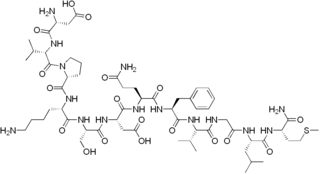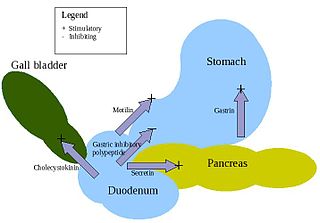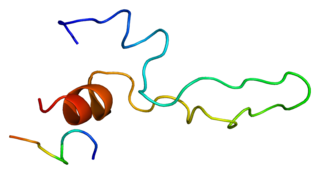 | |
| Names | |
|---|---|
| Other names Pyr-Gln-Arg-Leu-Gly-Asn-Gln-Trp-Ala-Val-Gly-His-Leu-Met-NH2 | |
| Identifiers | |
3D model (JSmol) | |
| ChEMBL | |
| ChemSpider | |
PubChem CID | |
| UNII | |
CompTox Dashboard (EPA) | |
| |
| |
| Properties | |
| C71H110N24O18S | |
| Molar mass | 1619.85 |
Except where otherwise noted, data are given for materials in their standard state (at 25 °C [77 °F], 100 kPa). | |
Bombesin is a 14-amino acid peptide [1] originally isolated from the skin of the European fire-bellied toad (Bombina bombina) [2] by Vittorio Erspamer et al. and named after its source. [3] It has two known homologs in mammals called neuromedin B and gastrin-releasing peptide. It stimulates gastrin release from G cells. It activates three different G-protein-coupled receptors known as BBR1, -2, and -3. [4] It also activates these receptors in the brain. Together with cholecystokinin, it is the second major source of negative feedback signals that stop eating behaviour. [5]
Contents
Bombesin is also a tumor marker for small cell carcinoma of lung, gastric cancer, pancreatic cancer, and neuroblastoma. [6]









